Scaling without managing technical debt is a recipe for disaster. I’ve seen it time and again in my journey through various organisations. Technical debt can be a silent killer, gradually slowing everything down until it becomes a major blocker. Every quick fix or shortcut we take may seem harmless at first, but as we scale, those seemingly minor decisions can snowball into significant issues.
The Hidden Costs of Technical Debt
When we ignore technical debt, we’re essentially piling on complexity. Here’s what I’ve observed:
New Features Take Longer: As the codebase becomes more tangled, adding new features can feel like navigating a maze. What should be a straightforward task turns into a lengthy process, leading to frustration among developers and stakeholders alike.
Increased Bugs: With complexity comes the likelihood of bugs. The more convoluted our systems become, the harder it is to maintain quality. This can lead to a vicious cycle where we spend more time fixing issues than delivering value.
Decreased Productivity: Ultimately, productivity takes a hit. Teams that are bogged down by technical debt find it challenging to focus on innovation and improvement. Instead, they’re stuck in a reactive mode, constantly putting out fires.
Building on a Solid Foundation
Scaling isn’t just about adding resources; it’s about ensuring that we’re building on a stable foundation. If our architecture isn’t solid, every new addition becomes a risk. This is where the concept of naked agility comes into play.
In my experience, working with teams to implement sustainable architecture and DevOps practices is crucial. Here’s how we can tackle this challenge:
Identify Weak Points: We need to take a hard look at our systems and identify areas that are vulnerable. This might involve code reviews, architectural assessments, or even just honest conversations with the team about pain points.
Implement Sustainable Practices: Once we’ve identified the weak spots, we can start implementing practices that promote sustainability. This includes adopting automated testing , continuous integration , and streamlined deployment processes.
The Power of Automation
Automated testing and continuous integration are game-changers. They allow us to scale efficiently and confidently. Here’s why:
Faster Feedback Loops: With automated tests, we can catch issues early in the development process. This means we spend less time debugging later on and can focus on delivering features that matter.
Consistent Deployments: Continuous integration ensures that our code is always in a deployable state. This reduces the risk associated with releases and allows us to respond to market demands more swiftly.
Confidence in Growth: When we have a robust system in place, we can scale without the fear of being slowed down by technical debt. This confidence is invaluable as we look to the future.
Let’s Talk About Scaling
If you’re ready to scale without being hindered by technical debt, I’d love to chat. It’s essential to address these issues head-on before they become insurmountable. Together, we can build a strategy that not only supports growth but also fosters a culture of quality and innovation.
In conclusion, managing technical debt is not just a technical necessity; it’s a strategic imperative. By focusing on sustainable architecture and embracing automation, we can ensure that our teams are equipped to handle the challenges of scaling. Let’s not just grow; let’s grow smartly.


























